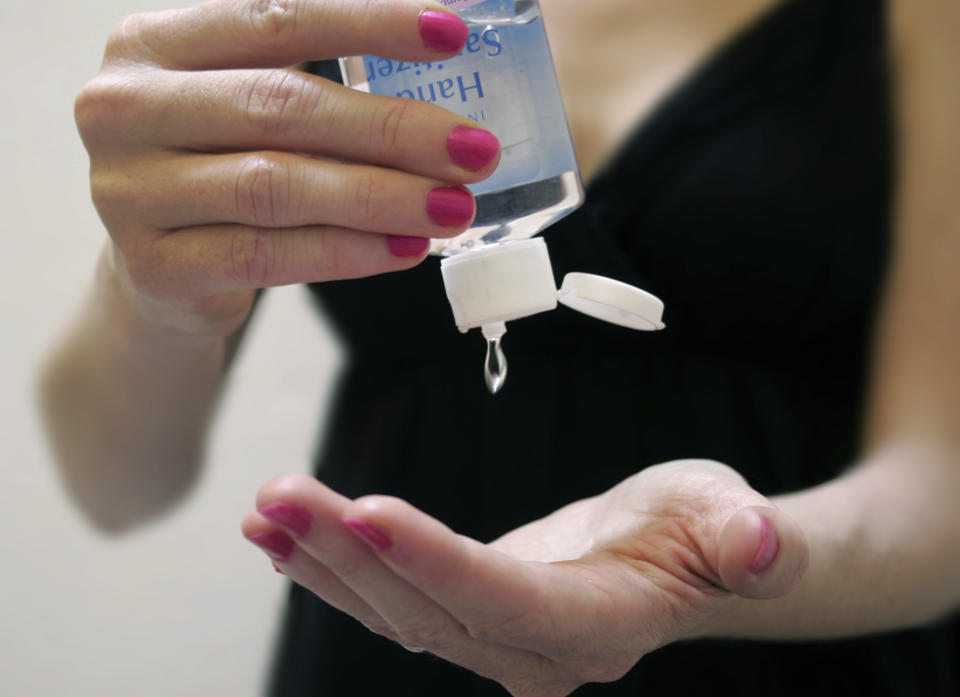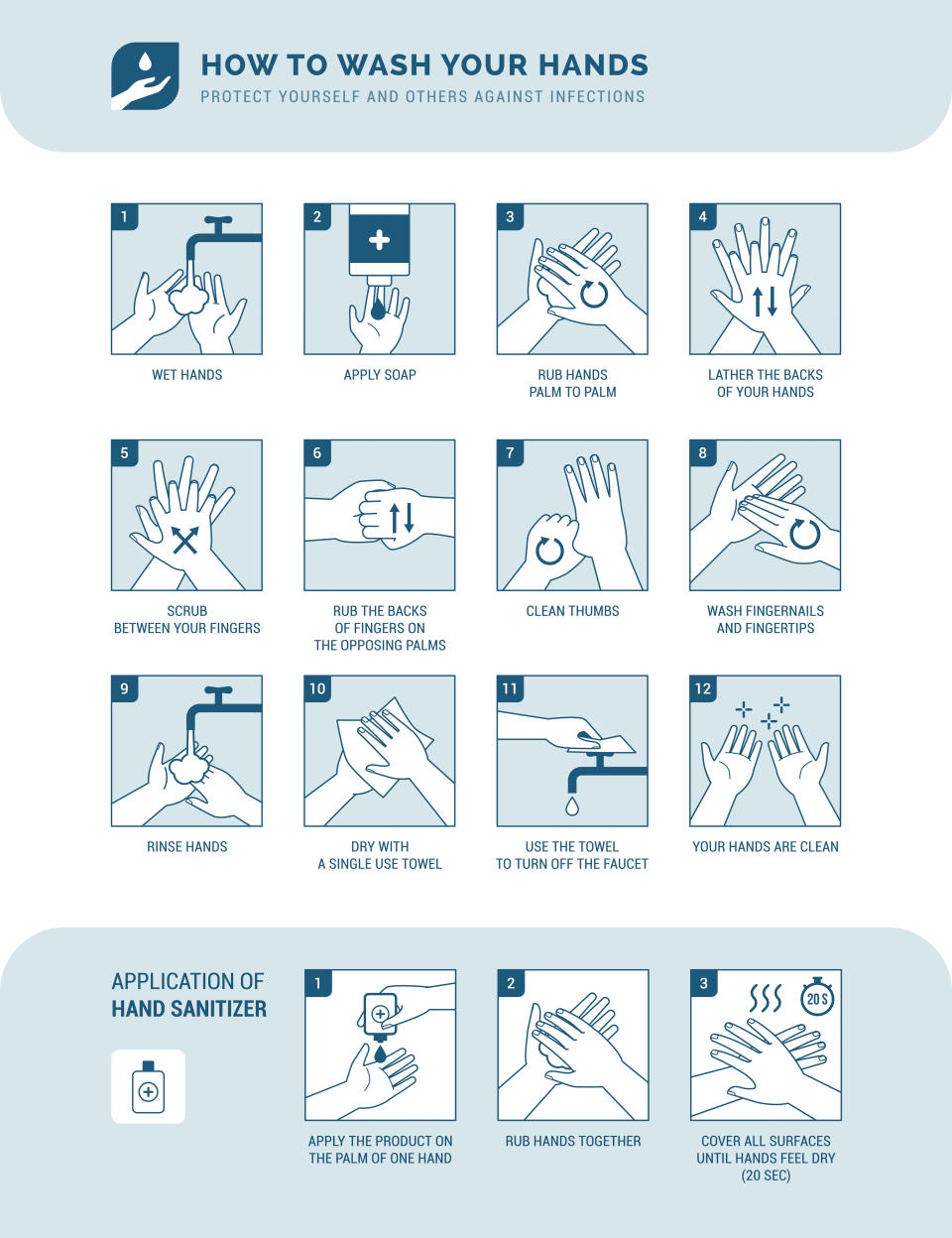Nurse's warning about making DIY hand sanitiser
A nurse has warned against attempting to make your own DIY hand sanitiser, as the internet is flooded with homemade versions of the product to combat shortages.
Supermarket and pharmacy shelves have been emptied of stock regularly over the past month amid the coronavirus pandemic, with some stores like Woolworths moving hand sanitiser to behind the customer service counter and imposing a limit on customer buying.

Many producers of hand sanitiser, such as Australian natural skincare brand MooGoo, have been unable to keep up with demand.
Craig Jones the CEO and founder of MooGoo confirmed to Yahoo Lifestyle their entire six-month stock of anti-bacterial hand-gel was snapped off chemist shelves in just four days.
And while there are a host recipes for homemade hand sanitiser that can be found online - the simplest of which is to mix alcohol (99% isopropyl alcohol) with aloe vera gel - Jessica Stokes-Parish, a nurse and researcher from the Hunter region, warns against them.
“As a general rule, you should avoid making a hand sanitiser,” Jessica tells Yahoo Lifestyle.
“There are many formulations being shared on social media that are simply incorrect - Listerine, essential oils - these are all insufficient.”

As a last resort, Jessica says the only recipe that would be effective is the World Health Organization’s formula for hand rub, however she still stresses not everyone is equipped to follow this correctly.
“You do require specific equipment to ensure it is effective and most of us are not equipped with the right skills. So I would strongly advise against doing this,” she adds, referring mostly to the required alcoholometer.
“Alternatively, you could try your local compounding pharmacy who might be making hand sanitiser available to the general public using appropriate formulations.”
Kent Institute Australia facilities manager Robert Fogden says it can be done, if many correctly, adding the ingredients can be easy to find.
“Isopropyl alcohol is available at any hardware shop, the glycerine and hydrogen peroxide you can get at a chemist, and the distilled water from Coles or Woolies,” he says.
At the end of the day the World Health Organization (WHO) recommends washing hands “frequently” with soap and water is the easiest way to “eliminate the virus if it is on your hands”.
What is the best way to wash your hands?
When you go to wash your hands, it is advised you first wet them under running water.
While it does not specify the ideal temperature, New York's Division of Military and Naval Affairs states it should be “as hot as you can comfortably stand” - typically at least 38°C.
Next, apply enough soap to cover both hands. Rub your hands together to create suds.
Use one hand to rub the back of the other, cleaning between the fingers as you go. Repeat with the other hand.
Rub your palms together, as well as the back of your fingers against your palms.

It is important not to forget your thumbs, which should be rubbed using the opposite hand.
The tips of the fingers should also be rubbed against the palm of the other hand.
The whole process should last around 20 seconds - the time it takes to sing Happy Birthday twice.
Finally, rinse your hands under running water, before drying them with a disposable towel.
Wet hands are said to “transfer viruses more effectively”. Use the same towel to turn the tap off, before disposing of it.
Got a story tip or just want to get in touch? Email us at lifestyle.tips@verizonmedia.com.

 Yahoo Lifestyle
Yahoo Lifestyle 



